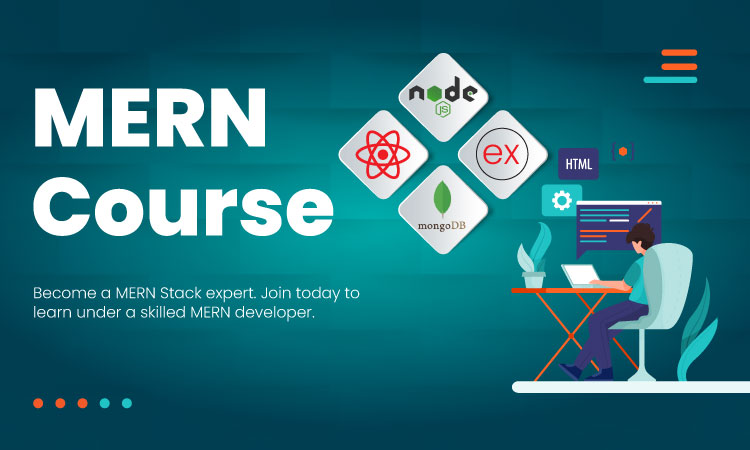
Introduction
In the dynamic landscape of web development, selecting the right technology stack lays the foundation for a successful project. While the MERN stack—comprising MongoDB, Express.js, React.js, and Node.js—has garnered widespread popularity for its JavaScript-centric approach, alternative stacks offer unique combinations of technologies to address diverse requirements. The MERN Full Stack Developer Course is one of the most preferred training courses for aspiring developers. From the MEAN and MEVN stacks, which swap out frontend frameworks, to traditional solutions like LAMP and innovative frameworks like Django and Ruby on Rails, developers have a plethora of options to explore.
This guide delves into these alternative stacks, highlighting their features, use cases, and advantages in the ever-evolving realm of web development.
Various Alternatives Of MERN Stack
When it comes to web development, the MERN stack (MongoDB, Express.js, React.js, Node.js) is undoubtedly popular, but it’s not the only option out there. Several alternatives offer different combinations of technologies, each with its own strengths and use cases.
Here, we’ll explore some alternatives to the MERN stack:
1. MEAN Stack
The MEAN stack, comprising MongoDB, Express.js, Angular, and Node.js, is a robust alternative to MERN. Angular, a TypeScript-based frontend framework, replaces React.js in MEAN. Angular provides a more opinionated structure compared to React, making it suitable for developers who prefer strong conventions and out-of-the-box solutions. It offers features like two-way data binding, dependency injection, and a comprehensive CLI for scaffolding projects.
MEAN is favoured for enterprise-level applications requiring a high level of consistency and maintainability across frontend components. While the MERN Stack Course Syllabus is different, the MEAN stack requires similar skill set. Angular’s strong ecosystem, including Angular Material for UI components and Angular Universal for server-side rendering, makes it a solid choice for large-scale projects where performance and scalability are paramount.
2. MEVN Stack
Similar to MEAN, the MEVN stack swaps Angular for Vue.js, a progressive JavaScript framework known for its simplicity and flexibility. Vue.js offers a more lightweight alternative to Angular and React, making it easier to integrate into existing projects or adopt for smaller-scale applications.
MEVN is ideal for developers who appreciate Vue.js’s intuitive syntax and gentle learning curve. Vue’s component-based architecture and reactivity system simplify the process of building interactive user interfaces, making it suitable for projects of varying sizes and complexities.
3. LAMP Stack
The LAMP stack, consisting of Linux, Apache, MySQL, and PHP, is a time-tested solution for building dynamic websites and web applications. While it deviates significantly from the MERN stack’s JavaScript-centric approach, LAMP remains popular, particularly in the realm of content management systems (CMS) and e-commerce platforms. Next to the MERN Full Stack Developer Course, LAMP courses are the most popular today.
LAMP’s appeal lies in its simplicity and versatility. PHP, a server-side scripting language, powers dynamic content generation, while MySQL serves as the relational database management system. Apache provides a robust web server environment, and Linux serves as the operating system foundation.
4. Django Stack
Django, a high-level Python web framework, offers an alternative to Node.js-based stacks like MERN. Known for its “batteries-included” philosophy, Django provides a comprehensive set of tools and libraries for rapid development of web applications. It emphasizes DRY (Don’t Repeat Yourself) principles and follows a convention over configuration approach.
With Django, developers leverage Python’s readability and expressiveness to build scalable and maintainable web applications. Django’s built-in admin interface, object-relational mapping (ORM) via Django ORM, and robust security features make it well-suited for projects ranging from simple prototypes to complex, data-driven applications.
5. Ruby on Rails Stack
Ruby on Rails, commonly referred to as Rails, is a full-stack web application framework written in Ruby. Like Django, Rails follows the convention over configuration paradigm, prioritizing developer productivity and simplicity. It provides a set of conventions, such as RESTful routing and ActiveRecord for database interactions, to streamline development.
Rails is renowned for its elegant codebase and developer-friendly ecosystem. It offers features like scaffolding for rapid prototyping, seamless database migrations, and a vast library of gems (Ruby libraries) for extending functionality. Rails is particularly popular among startups and small teams for its emphasis on getting projects off the ground quickly.
6. Flask Stack
Flask, a micro web framework for Python, offers a lightweight alternative to Django. Unlike Django’s monolithic structure, Flask provides a minimalistic core with flexibility for developers to choose their preferred tools and libraries. Flask is often described as “unopinionated,” allowing developers to make decisions based on project requirements.
Flask is well-suited for building smaller-scale applications or APIs where simplicity and performance are paramount. Its modular design and extensive ecosystem of extensions enable developers to tailor solutions to specific use cases while maintaining a clean and efficient codebase.
7. .NET Stack (ASP.NET)
The .NET stack, powered by Microsoft’s .NET Core or .NET Framework, offers a comprehensive framework for building Windows, web, and cloud applications. ASP.NET, a component of the .NET stack, provides a robust environment for developing web applications with C# or F#. It offers features like built-in authentication, middleware pipeline, and integrated tooling for development and deployment.
.NET is widely adopted in enterprise environments due to its integration with Microsoft technologies and support for Windows-based infrastructure. It offers scalability, performance, and security features necessary for mission-critical applications, making it a preferred choice for organizations with complex requirements.
Conclusion
To summarise, while the MERN stack remains popular for JavaScript-centric web development, alternatives like MEAN, MEVN, LAMP, Django, Ruby on Rails, Flask, and .NET offer diverse options to suit varying project needs and developer preferences. One can check the MERN Stack Course Syllabus and join a training program, or learn some other stack. By understanding the strengths and use cases of each alternative stack, developers can make informed decisions when selecting the most appropriate technology stack for their projects.








